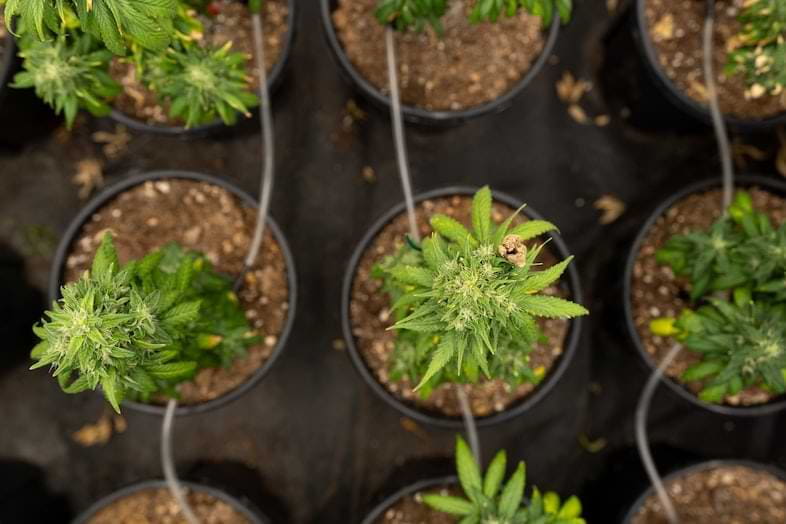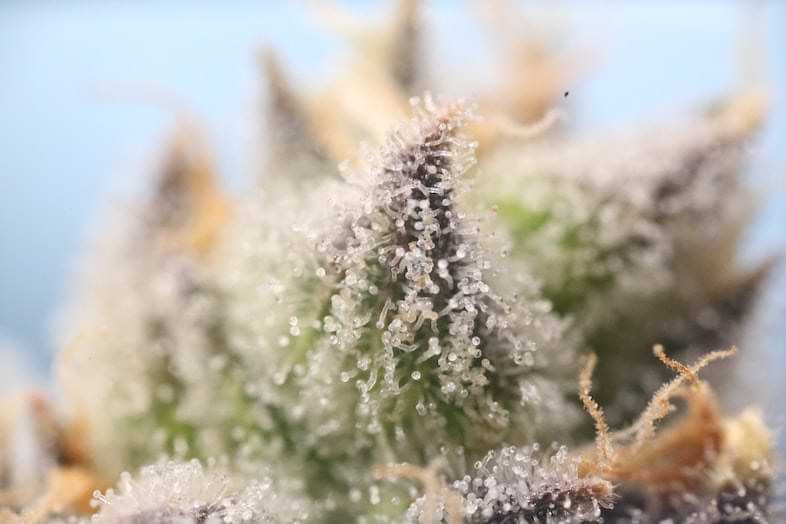Published on: 05/09/2022
Everything you need to know about white hemp
If you have a passion for hemp, you may have wandered the web in search of the various genetics of this plant and found photographs of completely white specimens. At the sight of them, you probably thought it was photoshopped or an optical effect.
In reality, you may have come across an image of an albino cannabis plant. In the next few lines, you will find out what the characteristics of a cannabis plant with albinism are and what causes this condition.


Cannabis albino: no hoax, it exists!
Although there is a widespread belief among many cannabis enthusiasts that the existence of white marijuana is just a myth, sometimes this plant can develop this colouring. No Photoshop retouching, then, but an authentic colour structure that almost gives the impression that the leaves are covered in frost or snow.
But what is this peculiarity due to some plants born from the germination of cannabis seeds? Albinism. That’s right: this phenomenon does not only affect some humans, who due to the absence of pigmentation have very white skin, but also animals and plants. The pigment in plants is chlorophyll, a very important element that you probably know about. It is an essential component of photosynthesis, the process by which plants produce nutrients useful for their survival.
An albino cannabis plant may show a lack of chlorophyll either in its entire structure or exclusively in certain areas (the tops, branches or leaves). As strange as the sight of a completely white plant may appear and cause an impression, albinism in cannabis is a possible phenomenon. Rare, but possible.
Having ascertained that this is not an urban legend, let us now find out why some marijuana plants can show this diversity.
Read also: Most productive auto-flowering: which are the best yielding varieties in 2022
Why do some cannabis plants turn albino?
We have already partly anticipated why some cannabis plants (but not only) can lack the classic green colour and be albino. But what is the reason for the total or partial absence of chlorophyll in them?
There can be more than one. The composition and health of the substrate, for example, can affect the chemical balance of the plant and cause albinism. Similarly, lighting and temperature can also be affected. Generally, however, the main cause of cannabis albinism is genetics. As is the case with humans and animals, it is difficult to determine why genetics cause this condition in plants.
However, among the factors that seem to favour albinism in cannabis is hybridisation. Many breeders are in the habit of crossing different genetics to create new varieties of cannabis, and their union seems to increase the likelihood of developing albinism.
From an aesthetic point of view, the birth of an albino plant is certainly an interesting event. But what effect does albinism have on cannabis productivity?


Is albino cannabis a productive variety?
Since albinism is due to the absence of chlorophyll, a completely albino plant is unable to carry out the photosynthesis process and therefore has a short life span. In the absence of photosynthesis, it is difficult for it to grow and develop long enough to produce inflorescences. Consequently, for a grower with little interest in aesthetic details, seeing an albino plant emerge is a misfortune.
The situation is different for plants in which only some of the tops or leaves are affected by albinism: in these cases, photosynthesis is not affected and growth takes place normally. This means that incomplete albinism has no negative effects on the productivity of the plant and the tops can produce inflorescences.
Of course, the presence of some parts of the plant affected by this problem could also indicate a cause other than genetic. Therefore, when faced with such an eventuality, a shrewd grower should immediately carry out checks on the substrate, temperature and lighting to prevent stressful conditions for the plant from continuing.
Read also: The effects of bisabolol, a terpene contained in cannabis and camomile
In conclusion
As we have seen, therefore, it is all true: albino cannabis is not a false myth but it does exist. Although it is a rare occurrence, the birth of an albino plant cannot be predicted. However, since hybridisation is one of the factors that could increase the risks in this respect, germinating auto-flowering seeds of pure genetics should minimise the chances of ending up with an albino cannabis plant. This is, of course, in countries where growing marijuana is legal.
In Italy, a country where growing cannabis is a crime, weed seeds can be purchased but not taken to germination. If you are a collector, visit the SensorySeeds website now: you can find several varieties of fast flowering seeds, feminized seeds and autoflowering seeds at great prices.









